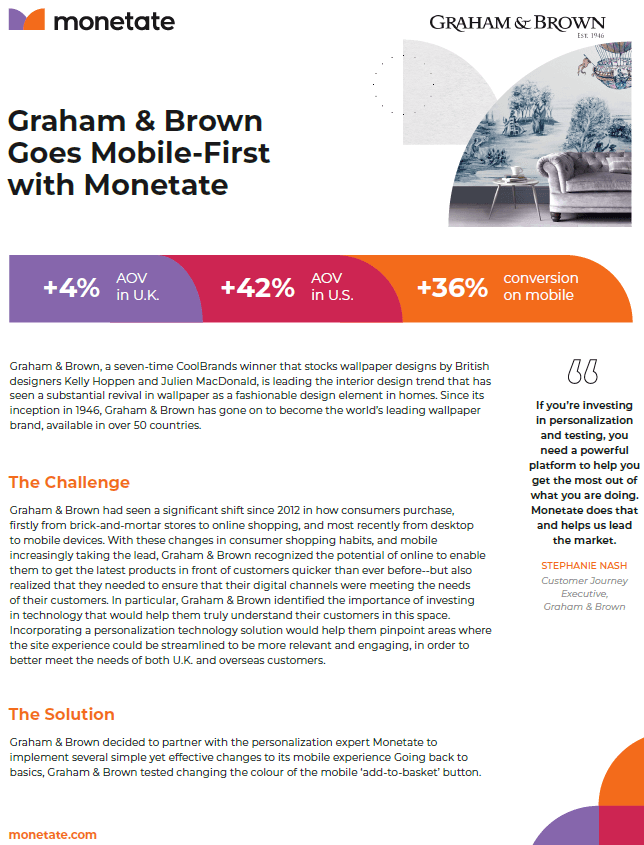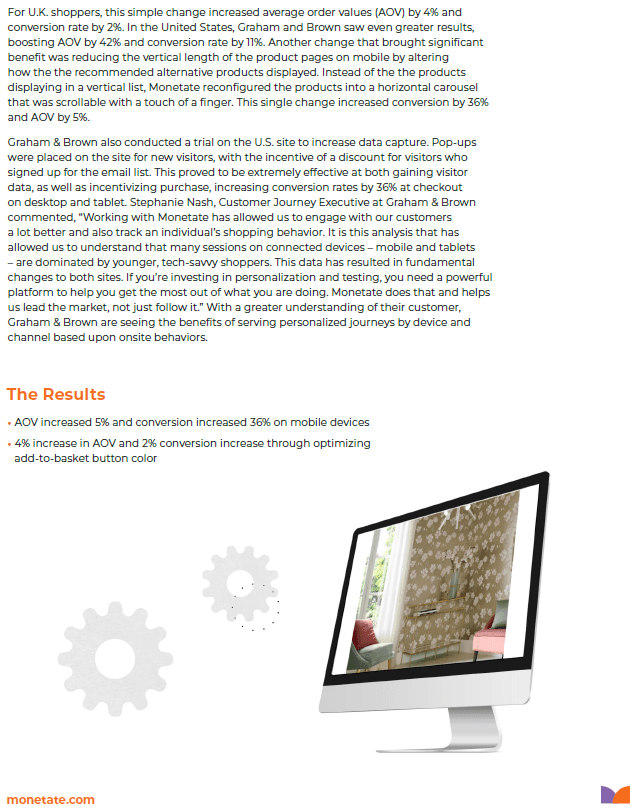How to Write a
B2B Case Study That Speaks to Your Ideal Customer
A case study is a short article that tells the story of how a customer purchased a company’s product or service and the results they got.
B2B marketers use case studies as a way to demonstrate real-world success stories to potential customers and show how readers could achieve similar results in their own business.
Case studies are a particularly engaging form of content because humans are hard-wired to pay attention to stories.
Beyond their entertainment factor, neuroscientists have proved that stories can also deeply influence our beliefs and decisions. This is because stories appeal to our emotions and our capacity for empathy.
Businesses have caught on to this in a big way. They understand the huge role customer success stories play in their sales process — which explains why they’re willing to pay writers $1,250–$2,000 per case study.
This chapter breaks down how to write an effective case study that draws readers in and showcases your client’s products or services as the perfect solution to their problems.
1. Prepare for the Project
The first step in preparing to write a case study is meeting with your client to get clear on the project goals. Ask if they want any specific details included in the study, and who their target audience is. They can likely provide you with a customer avatar or some general characteristics of their ideal customers.
You should also request any supporting materials they have available, such as research papers, press releases, sales reports, or anything else related to their business that might be relevant.
Once you have all the background information necessary, you’ll need to set up an interview with the person who will be featured in the case study. This is usually either a customer or an employee at your client’s company.
In addition, prepare a list of questions you can ask during the interview. You want to get a good picture of…
- the problem they were facing before they found your client’s product or service,
- the other solutions they tried and their results,
- how they used or implemented your client’s product or service, and
- what their final results were after using the product.
The last part of your preparations is to decide what “tech” you’ll need for the interview and to test it out well beforehand. It’s recommended to record your interview if possible. However, always ask the interviewee’s permission before you do this.
If you’re going to speak to them over Zoom or another online video conferencing platform, practice recording a session sometime before your call to make sure you know how to do it. Or if you’re going to be meeting in person, practice recording a conversation on your phone or whatever device you’ll be using.
Being well prepared will ensure the interview goes smoothly and that you get all the information you need to craft an effective case study.

2. Conduct the Interview
Interviewing the person the case study will be about is a critical step in the whole process. You may get only one chance to speak to them, so it’s vital to get the exact information you need.
As we mentioned previously, record the interview whenever possible so you can refer to it to capture all the details. It also helps to get the recording transcribed with an online service like Rev for easier reference.
When it comes to the interview itself, try to ask thought-provoking and open-ended questions rather than questions that would elicit a yes or no answer. This will help you get the most interesting and detailed information from your interviewee.
Next, listen carefully to their answers and use active listening skills, such as summarizing what they said in your own words to make sure you understand.
Also be cognizant of keeping the conversation on track, and ensure you’re covering all the relevant topics you’ll need for the case study. (See Storyline outline below.) If your interviewee starts getting off-topic, politely bring them back to the story with one of your prepared questions.
And, of course, thank them at the end of the interview for taking the time to speak to you. Remember, you’re also representing your client, so maintain your professionalism throughout the interview.
FREE TRAINING:
Discover Why B2B Copywriting is the Absolute Best Niche for New Writers!
Sign up below to hear from the expert who’s helped hundreds of writers launch lucrative careers in this niche where skilled writers are needed and respected.
3. Construct Your Storyline
The next step in writing a B2B case study is constructing a storyline from your interview notes and supporting materials. This will give structure and shape to the entire piece, which will make the final writing process much easier.
To create your storyline, gather all your information and start outlining your case study in this approximate structure:
- The customer’s background
- The challenges they were facing
- Their journey to find a solution
- The solution they found
- How they implemented the solution
- The results and benefits achieved
The following case study from Monetate (a company that provides software designed to support customer experience personalization) breaks the story into distinct sections to identify the challenge, the solution, and the results of one of their clients:


This case study provides a detailed description of Monetate’s client, the main issues they were facing in relation to customer experience personalization, how they wanted to solve these issues, the steps they took with Monetate’s help, and the positive results of their actions.
And all of this was done in only two pages, which is typical for a case study. Most case studies are about 800 to 1,200 words long — similar to a short blog post.
So, you don’t need to over-complicate the storyline of your case study. Try to keep it as straightforward as possible and focus on including the key details that would be most important and useful for your client’s target audience.
4. Write the Case Study
When it comes to writing the body of your case study, remember that you’re writing a story about someone’s personal experience. Focusing on the personal aspect of a customer success story will keep your reader engaged and reading until the end.
For the title or headline, think like a journalist — write something attention grabbing that summarizes what’s inside without giving away too much information. This helps build anticipation so readers want to find out more about the success story.
You can use words like “how” or “why” to create curiosity and intrigue, such as “How ABC Company Saved $50K Annually by Implementing XYZ Software.” This hints at what happened without telling all the details upfront.
Choose your subheadings carefully as well. You can use simple subheadings like Monetate did, or more descriptive ones that highlight a key point from each stage of the customer’s journey.
And throughout the story, highlight the benefits of your client’s product or service anywhere it’s appropriate.
Finally, don’t forget to include quotes from satisfied customers throughout the case study. This adds credibility and authenticity to the story, making it more convincing for potential customers.
Chapter Summary
A well-written case study can be a valuable asset in a B2B company’s marketing toolkit. If done right, it can provide powerful social proof for why customers should trust and invest in your client’s product or service.
And B2B case studies are unique projects to write. If you enjoy crafting a good story, you’ll likely enjoy writing case studies.
Case studies are also widely used throughout B2B marketing in nearly all industries, so this is a writing project you can specialize in exclusively while making a great income doing it.
If you’re interested in adding case studies to your writing services, take a look at our course Writing Case Studies: How to Make a Great Living by Helping Clients Tell Their Stories.

B2B Writers International: World-Class Training and Support for a Well-Paid Writing Career in B2B
The business-to-business industry is desperate for trained, professional writers. Learn to write solid B2B copy, land more clients, and be constantly in demand. For beginning and advanced writers. Learn More »
What’s Inside This B2B Copywriting Guide?
Introduction Welcome
B2B Copywriting: A Comprehensive Guide to Writing for the B2B IndustryChapter 1
Why Lead Generation Is Critical for B2B Sales (And How to Get It Right)Chapter 2
Unlocking the Secrets of B2B Blogging: What Every Writer Needs to KnowChapter 3
How to Create a Winning Social Media Strategy for B2B CompaniesChapter 4
How to Write a White Paper (That’s Not Boring)Chapter 5
How to Write a B2B Case Study That Speaks to Your Ideal CustomerChapter 6
How to Write B2B Newsletters to Boost Sales and EngagementChapter 7
Sales Enablement Copywriting for the B2B Industry: The Incredible Opportunity You’ve Never Heard Of